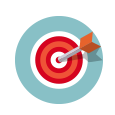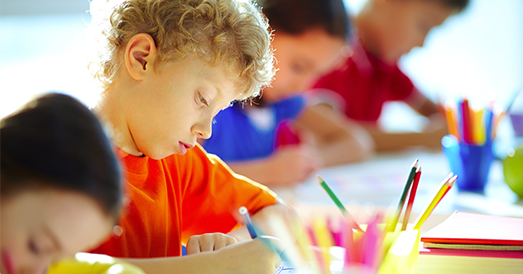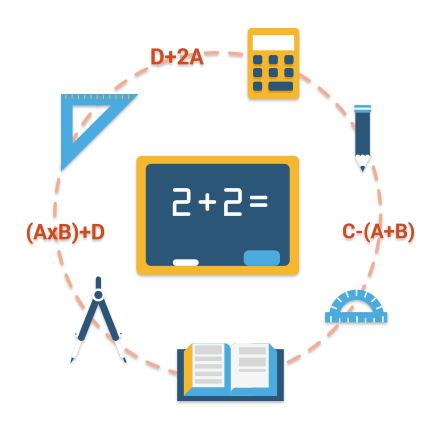Year 5 Maths
Year 5 maths sees you revisit subjects you learned at Key Stage 1. You will revisit counting and numeration to ensure that you are completely up to speed. You will use seven-digit numbers, addition to 9999 and beyond, subtraction involving four digit numbers and beyond using the renaming method, as well as multiplying 4-digit numbers by 4-digit number. One of the new skills that you will learn during year 5 maths is division/repeat subtraction, where you will do repeated subtraction with divisors greater than 50 with dividends of thousands and some remainders. In addition to this, in year 5 maths you will be introduced to problem-solving where you will be taught how to solve problems with equations, numbers and also with money. In order to ensure that what you learned on geometry and quadrilaterals in Year 4 Maths hasn’t been forgotten, you will revisit all the topics again to make sure that you are completely comfortable with the subject and you will also come across them briefly at Year 6 Maths.
.Popular Maths Curriculum Courses in England.
Key Stage 2
Year 6 Maths
Algebraic equations, rounding decimals, dividing and multiplying fractions and problems with length, mass and area are all introduced in year 6.
Key Stage 3
Year 7 Maths
Topics include an introduction to the square centimetre, geometry transformations without matrices and statistic probability.
Key Stage 3
Year 8 Maths
During year 8 you will be introduced to the formula of volume, whilst you will also study algebraic expressions to a higher level as you will begin to expand algebraic expressions.
Key Stage 3
Year 9 Maths
As you reach the end of Key Stage 3 you will study the rules for indices/expressions; adding and subtracting the indices. You will also be introduced to Pythagoras Theory.



KS2 Maths Topics
#
TOPIC
TITLE
1
Counting and numeration
The numbers 10 000 to 99 999
Objective: On completion of the lesson the student will be able to count to 99 999 and use place value to read the value of the numerals within the larger numbers.
2
Counting and numeration
Seven digit numbers
Objective: On completion of the lesson the student will be able to use place value knowledge to read and write seven digit whole numbers.
3
Counting and numeration
Addition to 9999 and beyond
Objective: On completion of the lesson the student will be able to use the student’s knowledge of place value to solve addition problems with 3, 4 and 5 digit numbers and word problems.
4
Subtraction
Subtraction involving four digit numbers and beyond using the renaming method.
Objective: On completion of the lesson the student will be able to use written methods to solve subtraction problems involving 4 and 5 digit whole numbers.
5
Multiplication
Multiples and factors of whole numbers
Objective: On completion of the lesson the student will be able to specify multiples and factors of whole numbers, and calculate the product of squared numbers.
6
Multiplication
Multiplying 2-digit numbers by 2-digit numbers
Objective: On completion of the lesson the student will be able to multiply any 2 digit number by any other 2 digit number.
7
Multiplication
Multiplying 4-digit numbers by 3-digit numbers
Objective: On completion of the lesson the student will be able to multiply any 4 digit numbers by any 3 digit numbers using long multiplication.
8
Multiplication
Multiplying 4-digit numbers by 4-digit number
Objective: On completion of the lesson the student will be able to be able to multiply any 4 digit number by any other 4 digit number using long multiplication.
9
Division
Divide whole numbers by a 2 digit divisor
Objective: On completion of the lesson the student will be able to solve and record division problems with whole numbers using a two-digit divisor and show any remainders as a fraction.
10
Division/repeat subtraction
Repeated subtraction with divisors less than 20 with no remainders
Objective: On completion of the lesson the student will be able to use long division by repeated subtraction with divisors less than 20.
| # | TOPIC | TITLE | |
|---|---|---|---|
| 1 | Counting and numeration | The numbers 10 000 to 99 999 | |
| Objective: On completion of the lesson the student will be able to count to 99 999 and use place value to read the value of the numerals within the larger numbers. | |||
| 2 | Counting and numeration | Seven digit numbers | |
| Objective: On completion of the lesson the student will be able to use place value knowledge to read and write seven digit whole numbers. | |||
| 3 | Counting and numeration | Addition to 9999 and beyond | |
| Objective: On completion of the lesson the student will be able to use the student’s knowledge of place value to solve addition problems with 3, 4 and 5 digit numbers and word problems. | |||
| 4 | Subtraction | Subtraction involving four digit numbers and beyond using the renaming method. | |
| Objective: On completion of the lesson the student will be able to use written methods to solve subtraction problems involving 4 and 5 digit whole numbers. | |||
| 5 | Multiplication | Multiples and factors of whole numbers | |
| Objective: On completion of the lesson the student will be able to specify multiples and factors of whole numbers, and calculate the product of squared numbers. | |||
| 6 | Multiplication | Multiplying 2-digit numbers by 2-digit numbers | |
| Objective: On completion of the lesson the student will be able to multiply any 2 digit number by any other 2 digit number. | |||
| 7 | Multiplication | Multiplying 4-digit numbers by 3-digit numbers | |
| Objective: On completion of the lesson the student will be able to multiply any 4 digit numbers by any 3 digit numbers using long multiplication. | |||
| 8 | Multiplication | Multiplying 4-digit numbers by 4-digit number | |
| Objective: On completion of the lesson the student will be able to be able to multiply any 4 digit number by any other 4 digit number using long multiplication. | |||
| 9 | Division | Divide whole numbers by a 2 digit divisor | |
| Objective: On completion of the lesson the student will be able to solve and record division problems with whole numbers using a two-digit divisor and show any remainders as a fraction. | |||
| 10 | Division/repeat subtraction | Repeated subtraction with divisors less than 20 with no remainders | |
| Objective: On completion of the lesson the student will be able to use long division by repeated subtraction with divisors less than 20. | |||
See More Topics Covered in Year 5 Key Stage 2 Maths
..









